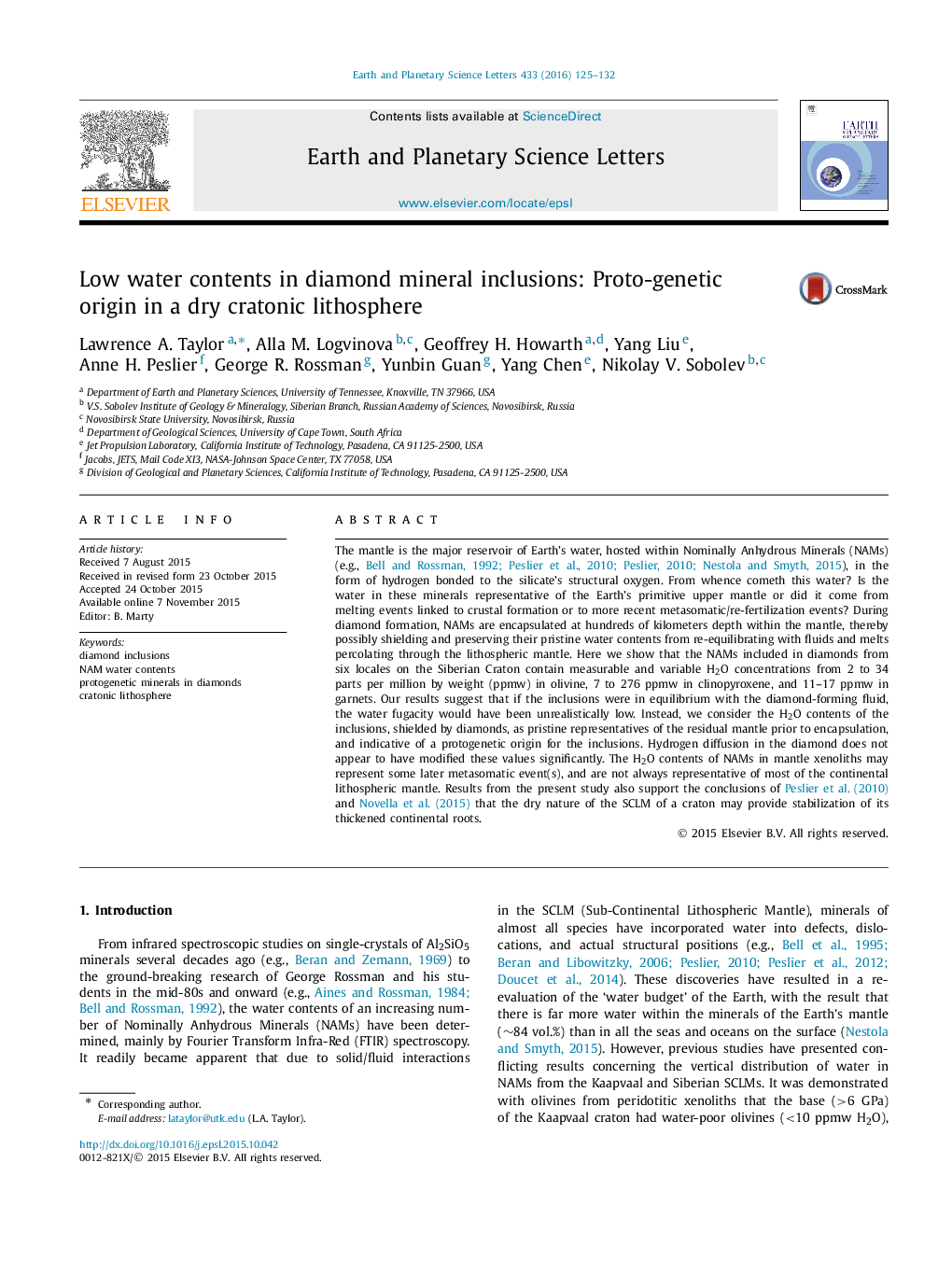| Article ID | Journal | Published Year | Pages | File Type |
|---|---|---|---|---|
| 6427691 | Earth and Planetary Science Letters | 2016 | 8 Pages |
â¢Water contents of inclusions in diamonds from Siberian Craton are unusually dry.â¢NAM inclusions in diamonds represent the dry nature of the Siberian SCLM.â¢Water in mantle xenolithic NAMs were acquired by secondary metasomatic processes.â¢Mantle xenolithic NAMs are not representative of the conditions of the SCLM.
The mantle is the major reservoir of Earth's water, hosted within Nominally Anhydrous Minerals (NAMs) (e.g., Bell and Rossman, 1992; Peslier et al., 2010; Peslier, 2010; Nestola and Smyth, 2015), in the form of hydrogen bonded to the silicate's structural oxygen. From whence cometh this water? Is the water in these minerals representative of the Earth's primitive upper mantle or did it come from melting events linked to crustal formation or to more recent metasomatic/re-fertilization events? During diamond formation, NAMs are encapsulated at hundreds of kilometers depth within the mantle, thereby possibly shielding and preserving their pristine water contents from re-equilibrating with fluids and melts percolating through the lithospheric mantle. Here we show that the NAMs included in diamonds from six locales on the Siberian Craton contain measurable and variable H2O concentrations from 2 to 34 parts per million by weight (ppmw) in olivine, 7 to 276 ppmw in clinopyroxene, and 11-17 ppmw in garnets. Our results suggest that if the inclusions were in equilibrium with the diamond-forming fluid, the water fugacity would have been unrealistically low. Instead, we consider the H2O contents of the inclusions, shielded by diamonds, as pristine representatives of the residual mantle prior to encapsulation, and indicative of a protogenetic origin for the inclusions. Hydrogen diffusion in the diamond does not appear to have modified these values significantly. The H2O contents of NAMs in mantle xenoliths may represent some later metasomatic event(s), and are not always representative of most of the continental lithospheric mantle. Results from the present study also support the conclusions of Peslier et al. (2010) and Novella et al. (2015) that the dry nature of the SCLM of a craton may provide stabilization of its thickened continental roots.
